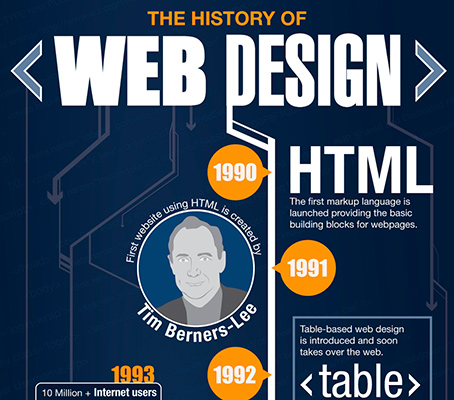The Advancement Of Site Style: From Past To Existing
The Advancement Of Site Style: From Past To Existing
Blog Article
Article Developed By-Rasmussen Trolle
In the past, internet sites were simple and focused on information. Navigation was direct, and layout was for desktops. Currently, customer experience is crucial. Data overviews layouts for very easy navigating. Receptive formats match different devices. Today, dark mode lowers pressure, and minimalist food selections enhance navigating. Interactive functions engage customers, and vibrant visuals attract attention. AI assimilation enhances involvement. See just how layout has evolved to improve your on-line trip.
Very Early Days of Web Design
In the very early days of web design, simplicity reigned supreme. Internet sites were fundamental, with restricted colors, fonts, and formats. The emphasis was on giving details as opposed to showy visuals. Customers accessed the web through sluggish dial-up connections, so speed and capability were crucial.
Navigating menus were straightforward, typically located at the top or side of the web page. Sites were developed for desktop computers, as mobile surfing had not been yet common. Content was king, and developers focused on simple readability over intricate style components.
HTML was the primary coding language used, and designers had to work within its restrictions. Computer animations and interactive attributes were marginal compared to today's requirements. Web sites were fixed, with little dynamic web content or personalized customer experiences.
Increase of User-Focused Layout
With the advancement of website design, a shift towards user-focused design concepts has ended up being progressively noticeable. Today, producing sites that prioritize customer experience is vital for involving site visitors and attaining business goals. User-focused layout involves recognizing the needs, choices, and behaviors of your target market to customize the web site's format, material, and features accordingly.
Developers now carry out detailed research study, such as customer studies and usability testing, to collect insights and responses directly from individuals. This data-driven method assists in creating instinctive navigating, clear calls-to-action, and aesthetically appealing user interfaces that resonate with site visitors. By placing the individual at the center of the layout procedure, sites can deliver a more individualized and satisfying experience.
Responsive design has actually also emerged as an essential aspect of user-focused style, making sure that internet sites are maximized for various tools and display sizes. This flexibility enhances access and use, dealing with the varied ways individuals interact with internet sites today. In essence, the increase of user-focused style symbolizes a change in the direction of developing digital experiences that focus on the requirements and assumptions of completion user.
Modern Trends in Website Design
Check out the current patterns shaping website design today. you can check here is dark mode style, using a smooth and modern appearance while reducing eye pressure in low-light environments. An additional essential trend is minimal navigation, streamlining food selections and enhancing user experience by focusing on essential elements. Incorporating micro-interactions, such as computer animated switches or scrolling results, can develop a more interesting and interactive site. Responsive style stays essential, ensuring smooth customer experiences throughout different gadgets. Additionally, making use of bold typography and asymmetrical formats can add visual rate of interest and draw attention to certain material.
Incorporating AI technology, like chatbots for client support or personalized referrals, enhances customer interaction and streamlines procedures. Availability has also become a considerable trend, with designers prioritizing inclusive style practices to accommodate diverse individual demands. Accepting sustainability by maximizing website efficiency for speed and effectiveness is an additional arising fad in web design. Working together with individual feedback and information analytics to repeat and enhance layout constantly is important for staying relevant in the ever-evolving digital landscape. By embracing these contemporary fads, you can produce an aesthetically appealing, straightforward site that reverberates with your target market.
Conclusion
As you review the development of web site design from the very early days to currently, you can see how user-focused layout has come to be the driving force behind modern-day trends.
Welcome the journey of modification and adaptation in web design, constantly maintaining the individual experience at the forefront.
Tippingpointdigital
Stay existing with the latest trends and innovations, and never stop evolving your method to create aesthetically magnificent and easy to use web sites.
Develop, adjust, and produce - the future of web design remains in your hands.
